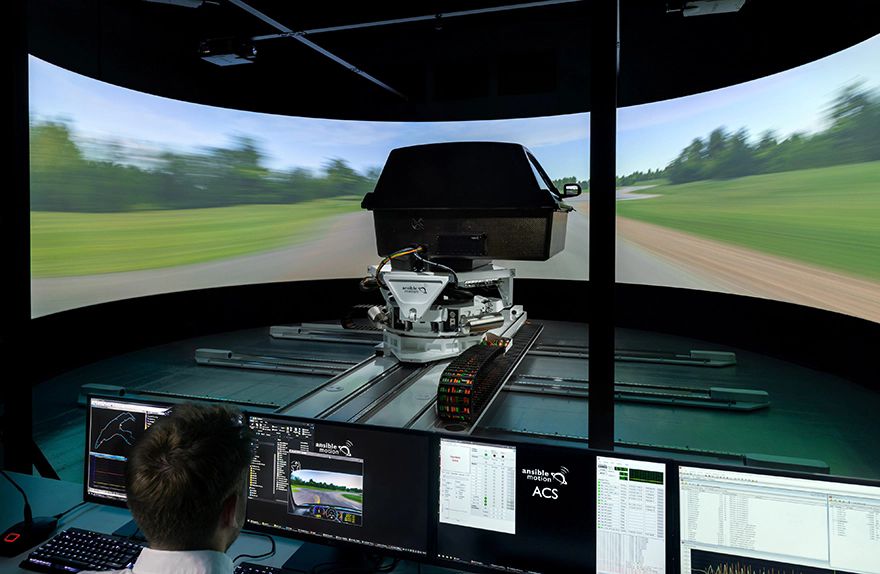
Norwich-based
Ansible Motion — a leading manufacturer of Driver-in-the-Loop (DIL) simulators featuring advanced computational and mechanical performance capabilities, has recently worked with
Cambridge University Engineering Department (CUED) to support a new PhD study into human driver behaviour, funded by
Toyota Motor Europe.
For over 25 years, researchers at CUED have examined driver-vehicle dynamics to enhance vehicle design and safety. The latest study set out to compare novice and expert drivers’ steering behaviour during extreme vehicle manoeuvres, revealing distinct learning patterns and control styles.
Initially, existing experimental data from an instrumented vehicle on a test track was used for the study, where drivers repeatedly performed identical obstacle avoidance manoeuvres. From this data, differences in steering and learning strategies between drivers were identified. The repeated manoeuvres used for the existing data limited what could be learnt about the evolution of a driver's steering strategy. A new, virtual test-driving experiment was devised in which 20 test subjects steered a vehicle along randomly curving paths using Ansible Motion’s dynamic Delta S3 DIL simulator.
Software from Ansible Motion’s sister company,
rFPro — the world’s most realistic, engineering-grade visual simulation environment — helped generate early results confirming differing learning rates between drivers, validating the approach.
The final analysis comparing the data from Ansible Motion’s simulator with the theoretical model will be completed in late 2025, offering further insights for future vehicle design and driver assistance systems.
Improve vehicle designDavid Cole, CUED’s professor of mechanical engineering, said: “Cambridge University Engineering Department has been researching driver-vehicle dynamics for over 25 years, aiming to improve vehicle design, performance and safety. Our most recent work, with funding from Toyota Motor Europe, is analysing how novice and expert drivers learn steering control.
“In order to collect experimental data in a safe and consistent environment, we made the decision to use a driving simulator with immersive motion and graphics. We are very grateful to Ansible Motion for their generous in-kind contribution to the research, by providing access to their simulator software, hardware and technical support. PhD researcher Harry Fieldhouse took 20 test subjects to Ansible Motion’s R&D Centre and performed the experiment, which ran according to plan.”
Dan Clark, managing director of Ansible Motion, added: “Studies such as this bridge the gap between academia and industry, so we are proud to support Cambridge University Engineering Department’s ground-breaking research into human driver behaviour. This investigation underscores the role of vehicle simulation in shaping the future of automotive engineering and development.”
Ansible Motion’s flagship simulator, the Delta S3 DIL simulator, which includes a patented six-degree-of-freedom Stratiform motion system and wrap-around projection graphics, provides a fully immersive environment for collecting precise data on driver responses. The simulator’s ultra-low latency and large excursion capability ensure realistic dynamics, which is critical for studying human-vehicle interactions in research studies such as CUED’s. With an open and modular software architecture, the Delta S3 also integrates seamlessly with sophisticated vehicle and subsystem physics models, Hardware-in-the-Loop (HIL) test benches and other essential vehicle development toolchains.
Ansible Motion counts some of the largest global automotive OEMs among its customers, including Honda, Ford, BMW and General Motors, alongside top-level racing teams from Formula One to the FIA World Rally Championship.